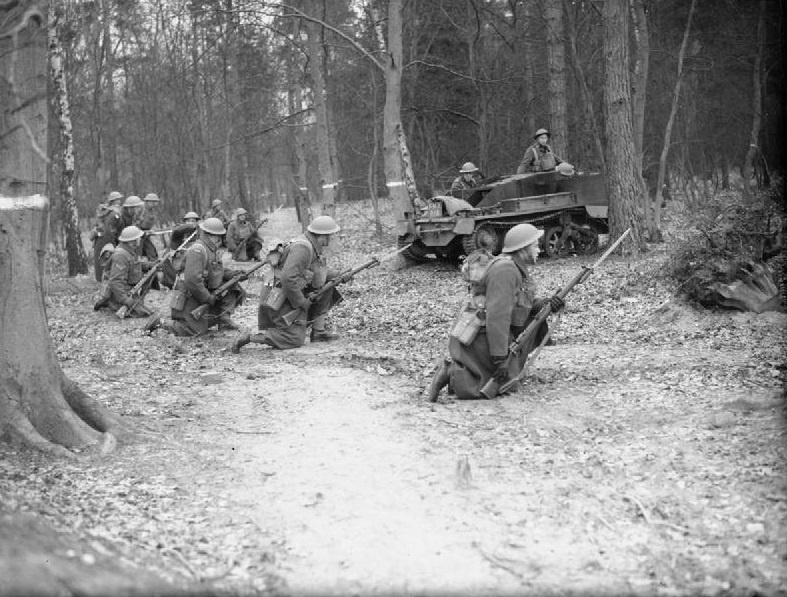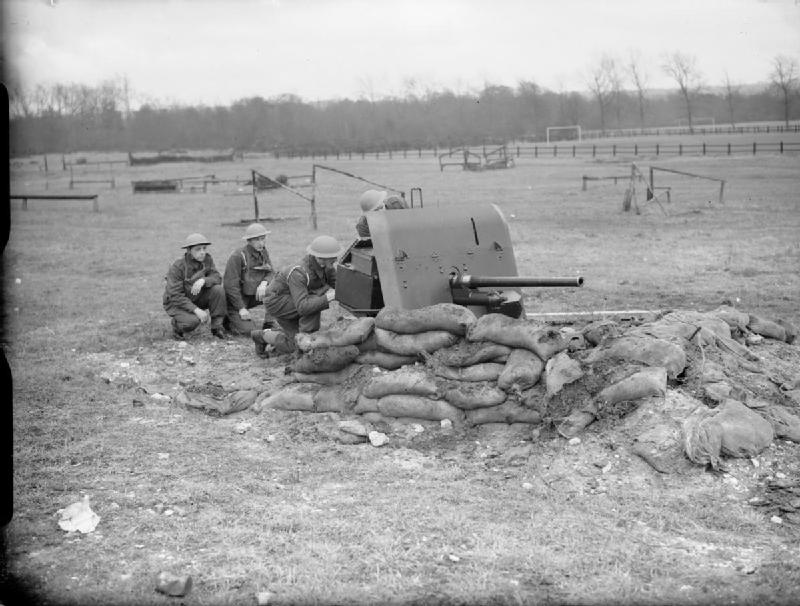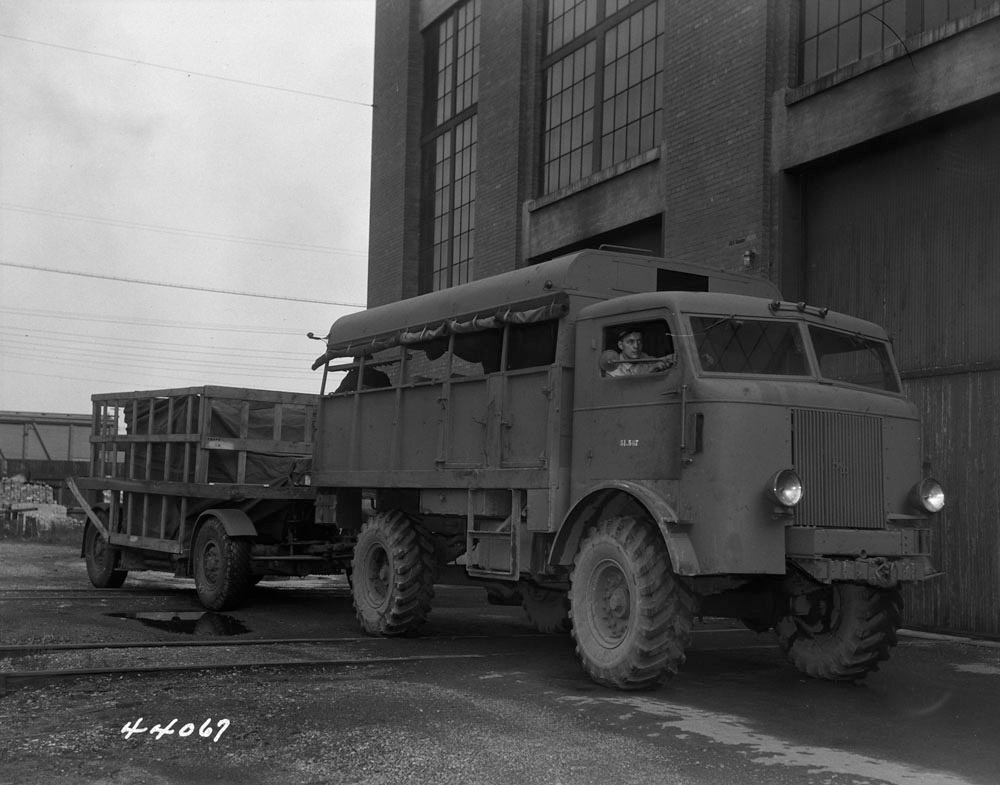Continuing the story of the Canadian Corps overseas.
Sources:
“Reader’s Digest: The Canadians at War: Volumes 1 & 2” ISBN-10 0888501617 (A compilation of articles ranging from personal stories to overviews of Canadian involvement in a particular campaign. Contains excerpts from a number of more obscure Canadian books written after the war, published 1969)
Starting from just after the declaration of war, the state of the Canadian Army is related by Readers Digest in its “Canadians At War” collection. From “The Black Spring”.
The Phoney War ended. The German Army marched into France and the Low Countries and overwhelmed all opposition. It soon made a mockery of the complacencies of Ottawa. The moment of truth had arrived. If the western front had held, the 1st Division might well have joined the British Expeditionary Force in France. Instead it lived that memorable spring in disappointment and frustration and finally in spectacular folly. In his book retelling the history of Canada,Ordeal by Fire: 1910-1945, Ralph Allen tells what happened:
"…In April, after the German Invasion of Norway, the British War Office decided to respond. Two Canadian battalions, the Princess Patricia’s and the Loyal Edmonton’s, were fitted with winter gear, piped aboard trains at Aldershot, drawn up before waiting ships in Scotland- then sent back to Aldershot, their mission cancelled. In May Germany struck to the west. Belgium fell. Holland fell. France reeled. With the shattered British Army falling back on its last beachhead in France, its destruction apparently only days away, the War Office summoned the 1st Division commander, Maj. Gen. A.G.L. McNaughton. The British, cut off from the main body of the French by the pursuing Germans, desperately needed protection for the road and railway on their exposed southwestern flank. McNaughton was asked to provide this, with the British brigade already at Calais and reinforcements from his own division.

(Infantry and Bren gun carriers of the West Nova Scotia Regiment, 3rd Canadian Infantry Brigade, 1st Canadian Infantry Division, training at Aldershot, December 1939.)
By noon May 23rd the three battalions of the 1st Canadian Brigade were ready to leave for Dover. By midnight McNaughton himself was across the Channel reconnoitering at Calais and Dunkirk. He found the situation precarious and confused, and while the brigade waited, he hurried back to London. He told Sir Edmund Ironside, Chief of the Imperial General Staff, that he didn’t think the small Canadian reinforcement could materially improve the situation. There seemed little point in throwing the Canadians into a mass of dispirited soldiers and civilian refugees. The operation was called off.
Two days later it was on again. It was called off a second time after McNaughton said his objection “was not based on any timidity but rather on a desire to get the best possible value for the effort made.” He added that a brigade group “could g tonight complete with artillery if the Prime Minister and the war cabinet decide it should be sent.” After this second cancellation Lord Gort, commander of the besieged and retreating force at Dunkirk, appealed for at least one and if possible two Canadian brigades. But Churchill, who had favored sending the Canadians, reluctantly consented to abandoning the project. Yet while the first ships of a brave and motley fleet nosed into Dunkirk to rescue the BEF, Churchill was planning to send another force to France at once for another purpose. With 340,000 British and Allied soldiers streaming back across the Channel, disorganized and unarmed, their transport smoking on the beaches of France, there were only two divisions in the UK ready and equipped to fight. One was the Canadian division, the other was the Scottish 52nd. Churchill proposed to send both to France and to try to stiffen the crumbling French armies and, more importantly, prevent the utter collapse of the French government and the morale of the civilian population.
It was a far more desperate undertaking than the abandoned sally into Dunkirk. The two divisions, with the remnants of two others trickling back from Dunkirk, were to deploy across 150 miles of front at the neck of the Brittany peninsula. The object was to delay, somehow, the westward rush of four German armies long enough to permit the fleeing French to rally and form a redoubt and thus save the Allies at least a foothold in Europe. On June 2nd, Lt. Gen. Sir Alan Brooke, just back from Dunkirk, was appointed commander of this second BEF. Brooke, who was to become Chief of the Imperial General Staff, wrote:
“This was one of my blackest moments. To be sent back into that cauldron with a new force to participate in the final stages of French disintegration was indeed a dark prospect.”
When Mcnaughton had digested Brooke’s orders, he drafted an operations instruction which contained the laconic estimate: “A division may have to hold up to 50 miles of front.” Then he had his staff bring the division’s war diaries up to date and send them to London. As Colonel Stacey wrote: “The 1st Division was, in effect, making its last will and testament; as it had good reasons to do…”

(Soldiers of the 1st Anti-Tank Regiment, Royal Canadian Artillery, training from a sandbagged position. Aldershot, December 1939.)
The 1st Battalion of the Hastings and Prince Edward Regiment was one of three that got into France with Brig. Armand Smith’s 1st Brigade; the division’s other two brigades were stopped before they could sail. Farley Mowat takes up the story:
…The whole of northeast France was in German hands and the panzer columns were driving southwest, almost unopposed by the disintegrating remnants of the French Army. The Regiment’s vehicles had been ordered to proceed independently to France. It was a proud convoy that moved to the embarkation port, more than 50 bright new trucks just received from home, ten Bren carriers and a dozen motorcycles. The transport carried with it the unit’s two heavy mortars, records and files, battle ammunition, reserve rations, quartermaster’s stores and nearly 100 men. It also carried the intelligence files and the unit’s entire stick of French maps.

(The trucks they received were probably CMP (Canadian Military Pattern) vehicles. CMP did not refer to any single design, but instead was an umbrella term for a wide variety of military vehicles built in Canada by the Canadian divisions of Ford, Chrysler, General Motors, and Dodge for military use. By wars end Canada had built 800,000 of them, more trucks than Germany, Italy, and Japan combined.)
Three days later, when the rifle companies boarded a train in Aldershot, each soldier was equipped with 50 rounds of rifle ammunition and rations for two days. So they went off to war. On the morning of June 13th, the spring sun beat pleasantly down on Plymouth while the Regiment formed up on the station platform in the center of a wildly enthusiastic crowd of civilians. The atmosphere was feverish with false optimism. Two French ships were at the jetty, one a decrepit passenger boat, Ville d’Angier, the other a dirty freighter unloading strawberries for the London luxury trade. The master of Ville D’Angier, an irascible Breton who spoke no English, was not certain he wanted a load of soldiers. As he and the officers argued, the men filched strawberries, smearing faces and uniforms with juice. Lady Astor bustled about dispensing comforts to the troops. Pausing beside one young soldier, she demanded to know his age, and, being told he was 19, raised her voice indignantly. “Such children being sent to war, I shall see it stopped at once!”
After some hours the captain of Ville d’Angier was persuaded to allow the troops on board, but his attitude remained that of a master whose ship had been chartered for an excursion. At dawn they came to Brest, and chaos. The town, filling with refugees, was already cluttered with slovenly French soldiers, amiable and without discipline. Marching up the dusty streets, the Canadians were appalled. No flags waved, no bands played. Civilians went about their business. The military organization was beyond confusion. It was more luck than anything which led the unit aboard its train bound for a point 200 miles inland, where the 1st Brigade was to concentrate. On the afternoon of June 14th, the train puffed hesitantly forward, making short dashes between stations, then halting as if to regain courage. In the hot, crowded compartments men drank the cheap wine which flowed at each halting place.
Hour by hour, but unknowingly, they approached the columns of the panzer divisions. No one gave much thought to the intended purpose of the journey. Each man still had only 50 rounds of ammunition. Several cases of blank training cartridges were in the baggage car. Their ignorance was appalling. No one had informed the Regiment that the Germans had bypassed Paris, even then entering a state of siege. The train crawled on and at dawn came into Laval, almost 200 miles inland. There it was halted by a frenzied station master. “Are these Canadians insane?” he cried. “Do they not know Paris has fallen and all resistance is at an end? Les Boches are only 40 miles away.”
The Canadians did not know, and the shock was so great that at first it could not be believed. France had capitulated. Panzers were even the bearing down on the Channel ports. The CO held a conference. The engineer uncoupled his engine, ran it to the rear of the train, and coupled up again. In this shattering moment when fantasy ended there was no confusion and no dismay. in this, its first vital emergency, the unit responded well. The holiday mood was at an end. As the train retreated, the face of the country underwent a terrifying change. Every little station was jammed with refugees in panic. A mob crowded against the train at every halt. Laden with absurd articles of household furniture, most had neglected to think of food. The troops gave their emergency rations to the hungry civilians. Colonel Salmon attempted to stop this dangerous generosity, but was seen to pass his own tin of bully beef to and old farmer and his daughter.
Soldiers manned Bren guns on the train roof to repel expected air attacks. They stared back as if to catch the first glimpse of armoured spearheads. When they reached Brest, they found it a hopeless muddle. The men were unloaded along the harbour shore. While the officers tried to find shipping, soldiers waited in the hot sun. many swam, until a German plane swung over the harbour and the shrapnel from AA shells began falling down amongst the. Toward the evening the companies marched aboard a little Channel pleasure-steamer, Canterbury Belle. She had been designed to carry 700 people but more and more troops swarmed aboard until, by dawn, there were 3000 men. Wounded Belgians, parts of French units and two thirds of 1st Brigade.
A strange inertia settled over the harbour. The war in France was finished, and it seemed this retreating fragment of an army had lost the volition to make the final move to safety. Inexplicably, all that day Canterbury Belle lay in Brest and men waited for a new Dunkirk. Then in the evening she made steam for home, and at dawn June 17th the Regiment entrained at Plymouth, for Aldershot…" Farley Mowat, The Regiment
The hastings transport section had penetrated deep into Brittany in its own carnival of confusion and had finally returned to the Brest area. There it had been ordered to destroy the Regiment’s equipment and vehicles. They were faced with the problem of Little Chief, the 500 lb mascot. There wasn’t room to take him back so they buried him in roadside ditch. Eventually they reached England in a Channel pleasure craft. “At least,” sighed Sgt. Basil Smith, “we saw a bit of France.” The whole brigade had been lucky. It is a remarkable fact, says Colonel Stacy, that only six Canadians were left behind across the Channel. One had been killed in an accident. Four were interned but escaped and made their way to England in 1941. The sixth remained a prisoner of war. There were heavy losses in equipment and vehicles but the 1st Field Regiment, through Lt. Col. J.H. Robert’s persistence, kept its guns out of German hands. Roberts had explicit orders to destroy his guns but could not bring himself to do so while there was a chance of saving them. He swore he could load them in an hour. The military authorities ashore, thinking he would never finish, gave him two. When the deadline came Roberts had loaded all of his own 25-pounders, and a number of Bofors AA guns that belonged to other units.
“Most of the Canadians,” wrote Ralph Allen, “arrived at Aldershot quite unaware of the narrowness of their escape, complaining hotly about the lunacy of the higher brass. But that summer of 1940 soon brought home the unbelievable truth: Britain might be invaded by a hostile army for the first time since William of Normandy. If this were to be prevented, the job might fall squarely on the Canadians, the closest approach to a mobile, armed and fully manned ground division in all the British Isles.”
General McNaughton said in a letter: “We are now squarely engaged in what I have long thought to be our most important task, the defence of these islands.”
Sorry for the lack of pictures, couldn’t find any photos of the unit as it moved through France, but picture taking was probably not their priority at the time.